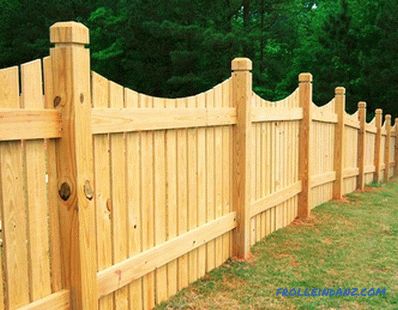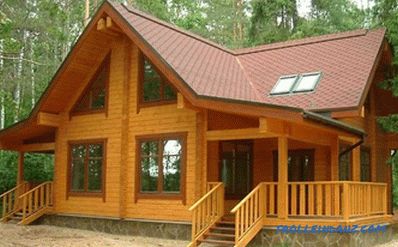From time immemorial, mankind has used wood for construction purposes. Advanced technology can significantly simplify labor operations. This is also to a large extent contributed by various options for connecting parts. Most of them are known to many masters, and some - only a few. For example, spiked joining of wood parts is a fairly common method, and not every professional uses a half tree connection. We propose to consider these and other ways of connecting wood in more detail.
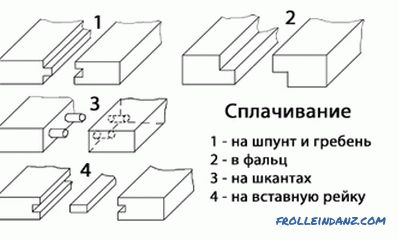
Stud joints of wooden parts.
Compound by end-to-end method
This type of compound is used very often today due to the ease of technology. In the process of joining parts according to the “end-to-end” method, the ends of the elements are fitted to each other with maximum density, fastened with fasteners (mostly screws or ordinary nails are used).
Features of the method:
- The fastener elements must be of sufficient length. One that would allow completely passing through the thickness of the wood of one piece and enter the second at least one third of its size.
- The thickness of the nail must be selected correctly. Otherwise the tree will just crack. When the technology provides for fastening nails of great thickness, then initially, before attaching two parts, they drill holes on the wood surface with a drill. For more effective fixation of wood elements between themselves, the diameter of the hole is made somewhat narrower than the diameter of the fastener.
- Additionally, it is recommended to glue the elements. As far as possible, they try to glue the wood surfaces before nailing. The composition is better to choose a harmless and does not contain toxins.
- Fasteners do not fit into one ruler. For a better quality of joining the elements, nails are driven in with some displacement.
Socket-stud connection

Elements of the spike connection.
Spike connections are well known to every master. As a result of the application of this method, a guarantee appears that the parts will receive the most rigid and durable grip. To perform the action here requires attentiveness and a little experience. That is why novice craftsmen resort to this method not so often.
To fasten a tree in a similar way, one element is equipped with a spike, the other with a groove. It's great when the bonded pieces of wood are of equal thickness. If this is not the case, it is recommended to perform a groove (or socket) on the thickened part. To facilitate the process of screwing the screws drilled in advance. Take into account that the holes must have a diameter of 2/3 of the circumference of the screw. The depth of the holes do a little less (about 0.5 cm) than the length of the screw.
The wood in both components must have the same degree of moisture. This fact should not be discounted, since when a tree is shrinked, a spike may become smaller in size, which will have a negative effect on the attachment strength.
Connection in the overlay
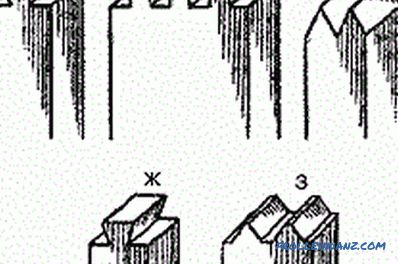
Types of connections.
This method is not as popular as previously discussed. Although all the procedures are quite simple: the parts are applied and fastened, for which nails, bolts or screws are selected. Features of this method are concluded in the preparation of a large number of fasteners and the observance of accuracy and attentiveness to technology.
- Details of the tree have a single-line or slightly offset. The main thing is not to perform displacements of an excessively large degree relative to each other.
- The components are fixed by engaging at least 4 nails, which are set in 2 rows (at least 2 pieces in 1 row).
- Fastening with a pair of screws is performed exclusively in the diagonal direction. Although it is recommended not to risk and add the number of fasteners.
- To increase the strength of wood fastening, choose fasteners with the greatest length, which will allow to go through both parts. Then the ends are folded.
Half-tree connection
The use of this method assumes that the specialist has high qualification.
In each part of the tree, a sample is made that corresponds to the width of the parts being fastened. Depth equals half of their thickness. The sampling angle provides any, but such that it coincides on each piece.
Only with the fulfillment of all the rules it will turn out guaranteed tight connection of elements with each other.
For fixing parts in this way, glue is first used and then nails or screws.
If necessary, make the connection partially: the end of one element of wood is cut, and the other is sampled. Each spike is pruned to 45 degrees.
Here you have considered the basic ways of connecting wooden elements. Choose acceptable - and for the cause.
Didn't find the answer in the article? More information on the topic:
-
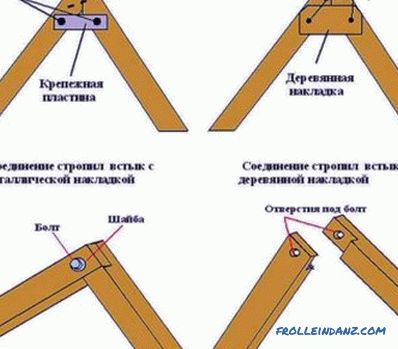
Types of mounting for rafters
Varieties of rafters. Rafters and plates for their fastening. Features truss-beams. Original truss mounts.

